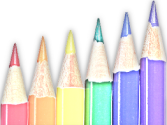Accuracy in a Multi-paragraph Paper
Accuracy in a Multi-paragraph Paper
Course(s)/Subject(s): English
Grade Level(s): Eighth
Key Words: technology, literature, research, expository
writing
Developer(s) Name: Frank N. Barker
School: Cooper Middle School
Approximate Time Frame: one week of 45 minute periods
Materials/Equipment Needed: computer lab with Internet
connections, selected short stories, school library
Description of Lesson (includes context): The students will
research the accuracy of an author’s work in a short piece of
writing and assess that accuracy in a multi-paragraph paper. This is
to prepare them for a multi-page paper assessing the accuracy of an
historical novel.
1. What is the objective of this lesson? To assess
the accuracy of a writer’s work, to use the Internet for
research, to assess the accuracy of information on the Internet, to
use the library for research, to read a variety of literature, to
write an expository paper, to learn to correctly cite sources.
FCPS POS Standards: Standard 4
FCPS POS Benchmarks: 4-1,
FCPS POS Indicators: 1.1, 1.3, 1.5, 1.6
VA SOL(s) (including Computer/Technology): 8.6, C/T8.1.1,
C/T8.2.1, C/T8.4.1
Other:
2. What will we examine as evidence of students’
knowledge and/or skill?
Product(s): an expository paper
Performance(s): Students will respond critically to ideas in
written language by evaluating print and mass media for accuracy.
They will use all aspects of the writing process to produce a final
product. They will use computers for research and word
processing.
3. What exactly will the students and teacher do during
the lesson?
Directions to students for proceeding with the lesson:
- Day One--In the classroom--(or previously for homework)
Read a short story with some historical content (For example:
Gary Paulsen’s “Stop the Sun” in MacDougal/Littel
Literature and Language)
- Choose something mentioned in the story to research. In
“Stop the Sun” you may want to choose mortars or
Viet Cong or stress syndrome. Be certain to be
narrow and specific with your choice; do not attempt to research
the entire Vietnam War.
- Day Two--In the computer lab--research your topic using at
least two Internet sources. Save the information you find on your
disk. Be certain to save the Web addresses.
- If you have time during this trip to the computer lab, begin
editing the information you have found using ClarisWorks. You may
use some direct quotes, but be certain to cite your sources if you
do. Most of the writing should be in your own words.
- Day Three--In the library--research your topic using at least
two print sources. Take notes on the information. Remember to
properly cite your sources.
- Day Four--At home or in the classroom--Assess the information
you have collected. Do all the facts agree with each other? Think
about the sources. Were the Web sites a valid, expert source? Were
the print sources written by people who know their business? Do
they all validate what the author wrote in the story? Is all the
information historically accurate? If any of it is contradictory,
look for some other sources to help validate the information.
- Day Five and Six--In the computer lab--Draft a five paragraph
expository paper to prove the historical accuracy of the
author’s short story. Include the author’s original
reference to the item, and your cited information that confirms or
denies the accuracy of it. Use the entire writing process to
complete the paper. Include a correct works cited page that
includes the original short story, at least two Internet sources,
and at least two print sources.
Directions to teacher/administrator using the lesson?
- Demonstrate some facts that help support the author’s
writing. For example, Paulsen writes about the Viet Cong using
mortars. According to a Web site on weapons, “The 81 mm
mortar is a medium, indirect close support infantry weapon. It
fires high explosive, smoke and illuminating ammunition.”
(http://www.lfc.dnd.ca/english/equip/armes/mor_c3.gif) Show
corroborating evidence from a print source and demonstrate to the
class how to make those connections between fact and fiction.
- Be certain to watch as the students write. Some of them will
copy and paste information directly from a Web source and claim
that it’s their own writing. Show them how to paraphrase or
cite a direct quotation. It’s better to head off plagiarism
before they commit to print than to have an honor code violation
after their work is printed.
- Note to teachers: This project is adaptable to science
fiction; the student researches the scientific accuracy of some
aspect of the book. For example, would the laws of physics allow
for a faster than light starship?
4. What options in presentation(s) and/or response(s)
are suggested in order to provide the opportunity for all students to
demonstrate achievement of the benchmark(s) and indicator(s)?
The assignment is ideal for independent help. Not everyone has to use
the same sources or even the same original story.
Adjust the difficulty of the original story for students with
language or reading difficulties. In the library, while other
students are using books, periodicals, and more sophisticated
reference materials independently, assist the more challenged
students with simpler sources, such as the World Book
encyclopedia.

